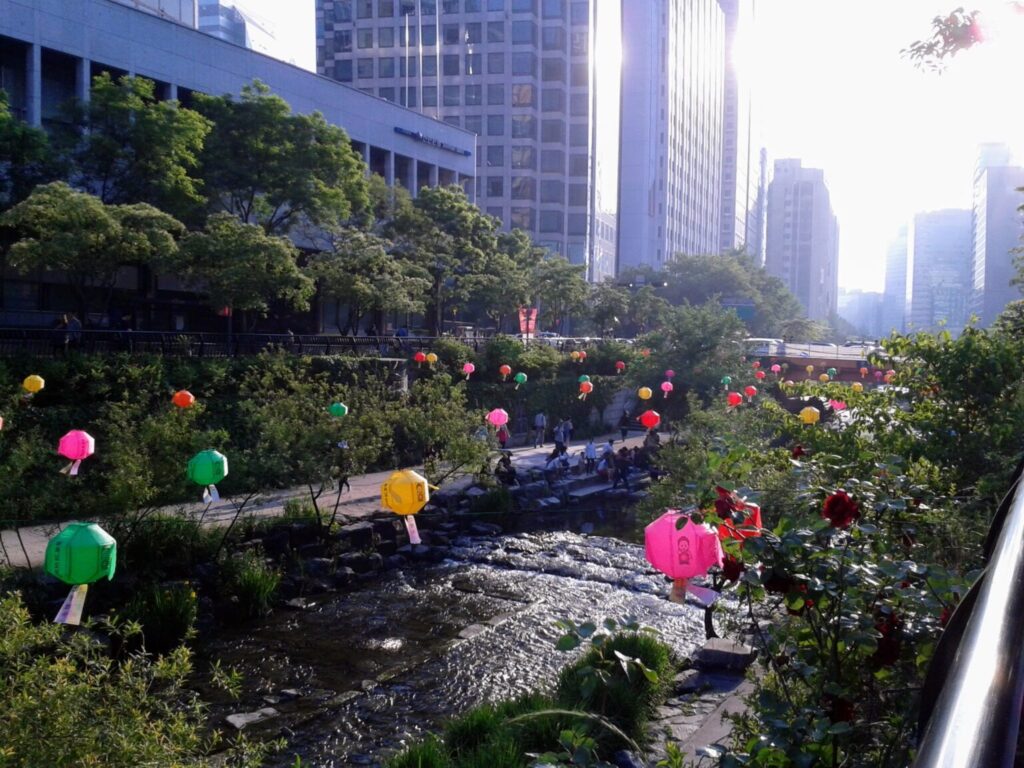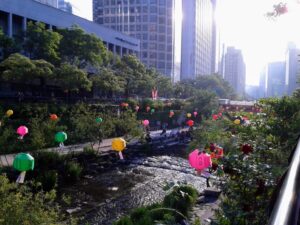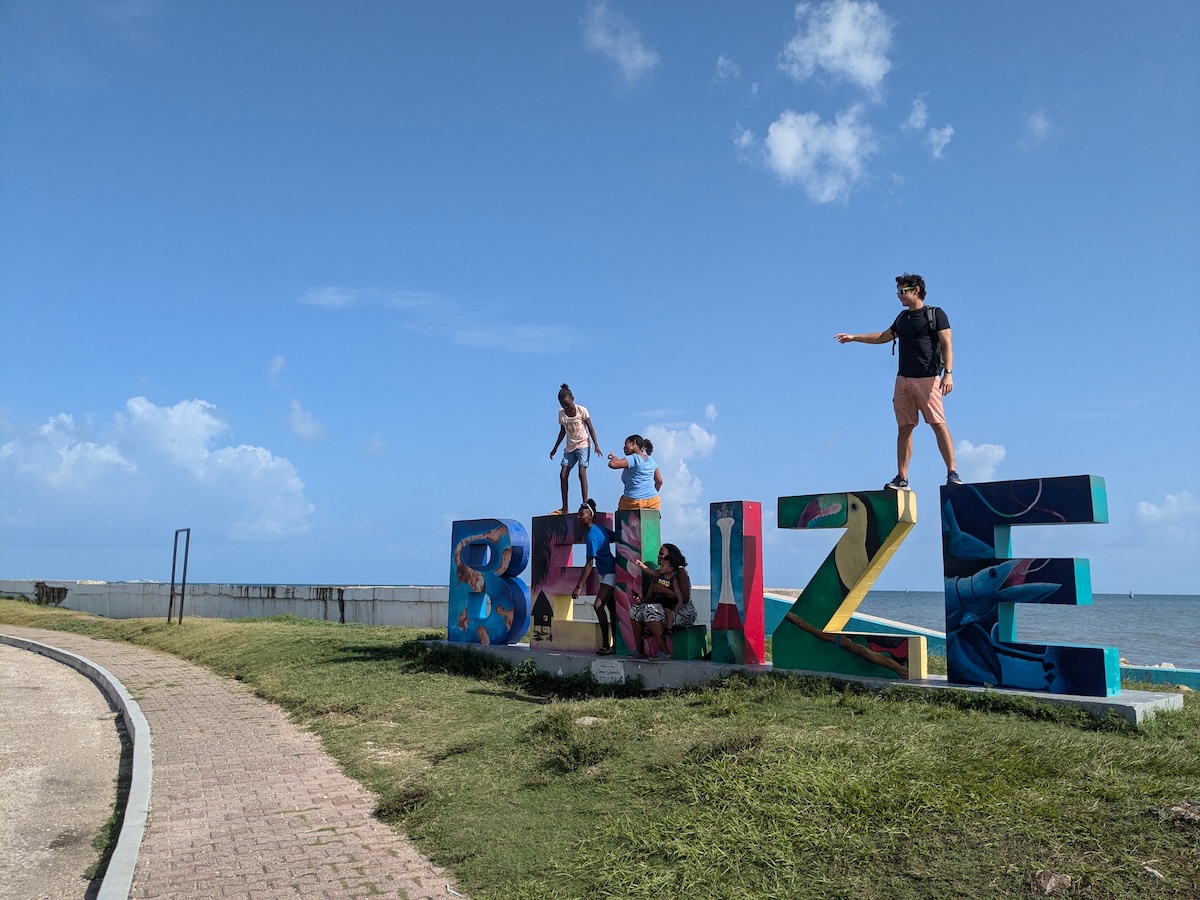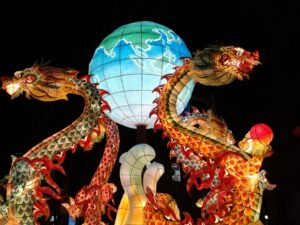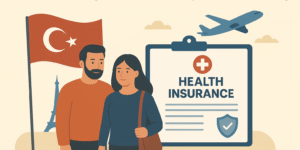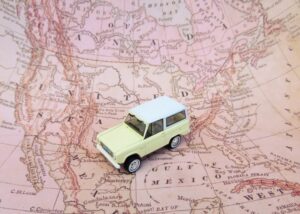If you want to get to know South Korea, you’ll be amazed by the contrasts of history and culture, tradition and technology! Here you’ll find itinerary ideas and a detailed map of where to go, what to eat, etiquette tips and what you need to know before visiting the capital of K-pop and drama!
Located in the southern part of the Korean Peninsula, South Korea offers a rich cultural variety, where centuries of tradition meet cutting-edge technology and urban life.
With its bustling capital, Seoul, as your starting point, you can experience an immersion in this great metropolis, where modern skyscrapers share space with historic palaces, busy streets interspersed with quiet alleys and the hustle and bustle of contemporary commerce contrasts with the charm of traditional markets.
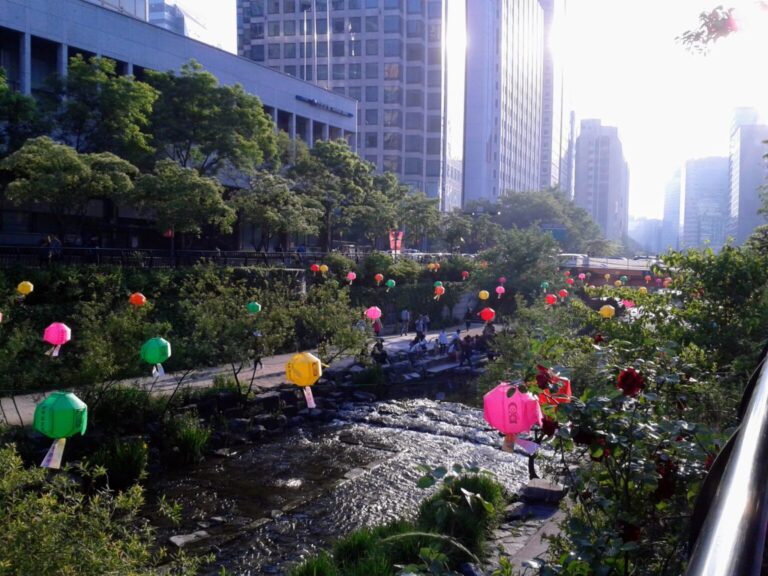
But South Korea is not limited to its capital; Its landscape is diverse, with towering mountains, beautiful islands and charming villages, all offering a unique insight into South Korean life and culture.
In addition, South Korea is world-renowned for its rich cultural scene, ranging from the global phenomenon of K-pop to the acclaimed film industry of television dramas, known as doramas. Whether you’re a pop culture enthusiast or a lover of history and nature, South Korea has something for every type of traveler.
So, if you’re looking to embark on an unforgettable trip, get ready to explore the captivating charms of this country, where the ancient and the modern meet in unique harmony. Pack your bags for South Korea – a destination that promises to surprise, delight and inspire every step of the way.

What are the 10 essential etiquette tips for visiting South Korea?
Visiting a new country can be tricky if you’re not used to the unwritten rules. That’s why I’ve put together this summary so you don’t get lost or make a fool of yourself! ![]()
1. Greetings: In South Korea, it’s common to greet people with a slight bow of the head. When meeting someone for the first time, especially if they’re older or of higher status, it’s considered polite to bow your torso and head slightly.
2. Exchanging Business Cards: During business meetings or formal gatherings, it’s common to exchange business cards. When offering or receiving a card, do so with both hands and read it respectfully before putting it away. This shows courtesy and consideration.
3. Removing Shoes: In many places, such as private homes, temples, and some restaurants, you’re expected to remove your shoes before entering. Make sure to check for shoes at the entrance and follow the locals’ example.
4. Respecting Elders: Hierarchy is valued in Korean society. It’s important to show respect to elders, whether through polite language or offering your seat on public transportation.
5. Don’t Show Your Shoe Sole: Showing your shoe sole is considered rude in Korean culture and other Asian countries. When sitting, avoid crossing your legs and make sure your shoes are not pointing directly at anyone, especially elders.
6. Using Chopsticks: When using chopsticks to eat (those sticks we use to eat sushi), avoid sticking them vertically into a bowl of rice, for example, as this resembles the ritual of offering to the dead. Instead, lay them horizontally over the bowl or on a chopstick rest, if provided. Always observe the locals and act accordingly.
7. Don’t Touch the Head: Avoid touching anyone’s head, even children, as this is considered invasive and disrespectful in Korean culture.
8. Refusing Offers: If someone offers you something, such as food or gifts, it is polite to initially refuse a few times before accepting. This shows modesty and courtesy.
9. Avoid Showing Affection in Public: Gestures of affection, such as kissing and hugging, are usually reserved for private settings. Use moderation when expressing affection in public, especially with your partner.
10. Saying Thank You: When receiving something or being helped by someone, it is considered polite to express gratitude. Use expressions such as “Kamsahamnida” (thank you) to show appreciation.
Following these etiquette tips will help ensure a smoother and more enjoyable experience during your visit to South Korea, demonstrating respect for the local culture and traditions.
Now…
I will give you 2 options for 3-day itineraries in South Korea. An essential itinerary and an adventure itinerary. It is up to you to decide which one to follow and enjoy! ![]()
Exploring the Essence of Seoul: A 3-Day Traditional Itinerary in the South Korean Capital
See the detailed map after the list of attractions! ![]()
Day 1: Immersing in History and Tradition
If you want to immerse yourself in the rich history and tradition of Seoul,
Seoul’s cultural heritage, the first day of your itinerary will be perfect for that. Start your day by exploring the majestic Gyeongbokgung Palace, Korea’s largest and most iconic royal palace. Stroll through its spacious courtyards, admire the beautiful traditional architecture and don’t miss the daily changing of the guard.
After marveling at the grandeur of Gyeongbokgung, head to Bukchon Hanok Village, a historic neighborhood filled with traditional Korean houses, known as hanok. Get lost in the narrow cobblestone streets and discover the timeless beauty of this charming place, and take some charming photos.
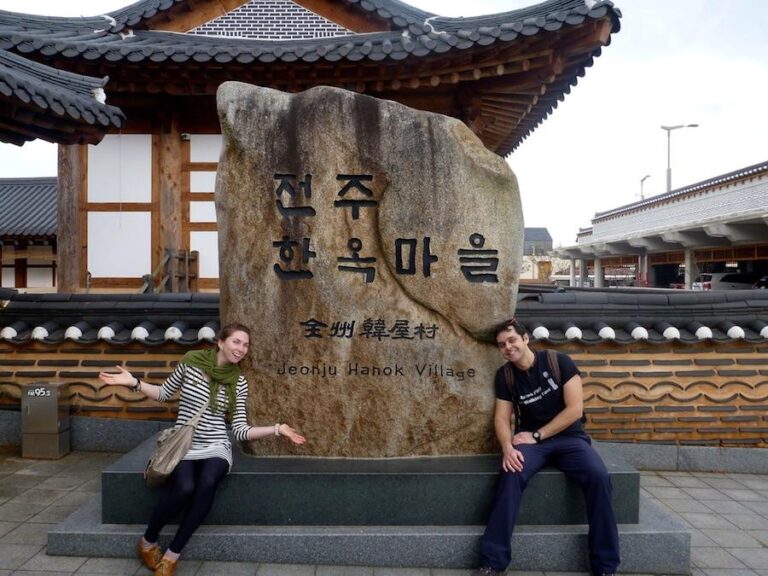
For lunch, try traditional Korean cuisine at one of the local restaurants in Bukchon or head to Insadong, a neighborhood famous for its streets lined with craft shops, art galleries and restaurants serving traditional Korean dishes.
In the afternoon, be sure to visit Changdeokgung Palace and its beautiful Secret Garden, a UNESCO World Heritage Site. Explore every nook, cranny, and path of this tranquil place, which offers a glimpse into palace life in ancient Korea.
End your day with a relaxing cruise along the Han River, where you can enjoy stunning views of the city lit up at night. Consider dining at one of the floating restaurants along the river for an experience you won’t soon forget.
Day 2: Modernity and Innovation
As I mentioned before, Seoul is a city that harmoniously blends tradition and modernity, and on day two of your itinerary, you’ll get to explore the bustling life of modernity in the city.
Start your day by visiting the stunning Dongdaemun Design Plaza, an architectural masterpiece designed by Zaha Hadid. This cultural and design hub is home to temporary exhibitions, fashion stores, event spaces, and more.
Next, stop by the Gangnam neighborhood, famous for its luxurious and modern lifestyle. Stroll down Garosu-gil Avenue, a tree-lined street lined with designer shops, chic cafes, and art galleries.
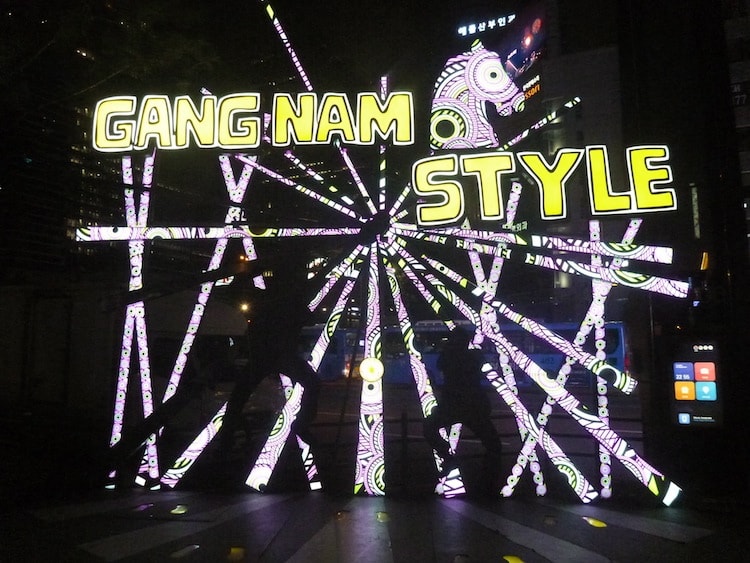
For lunch, sample contemporary cuisine at one of Gangnam’s many innovative restaurants, which offer international cuisine.
In the afternoon, head to Gwangjang Market, one of Seoul’s oldest and liveliest markets. Browse the street food stalls and sample local delicacies like bindaetteok (mung bean pancakes) and tteokbokki (spicy rice balls).
In the evening, be sure to check out Seoul’s entertainment scene in areas like Hongdae or Itaewon, where you’ll find a plethora of bars, clubs, and karaoke bars to enjoy a night out, Korean style.
Day 3: Nature and Serenity
For the last day of your Seoul itinerary, take some time to explore the natural beauty and serenity that the city’s natural surroundings have to offer.
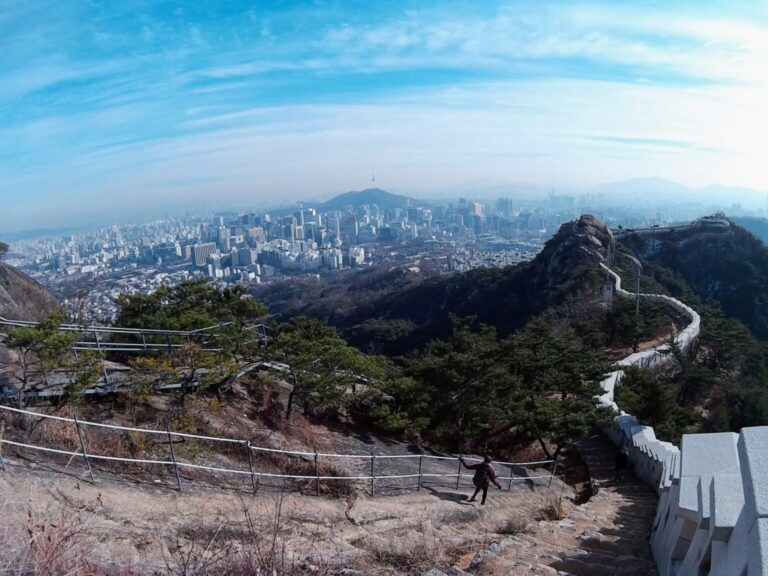
Start your day with a visit to Mount Namsan, which offers stunning views of the city from its summit. You can either take a cable car up there or opt for a hike to the observation deck. At the top, be sure to visit the N Seoul Tower, one of Seoul’s most iconic landmarks.
Next, pay a visit to Seoul Olympic Park, which was built to host the 1988 Summer Olympics. The park offers expansive green spaces, sparkling lakes, and sports facilities, perfect for a relaxing stroll or picnic.
For lunch, enjoy a picnic in the park or sample the delicious street food sold nearby.
In the afternoon, pay a visit to Jogyesa Temple, one of Seoul’s most important Buddhist temples. Admire the architecture and take part in a tea ceremony or meditation for a truly enriching and immersive experience.
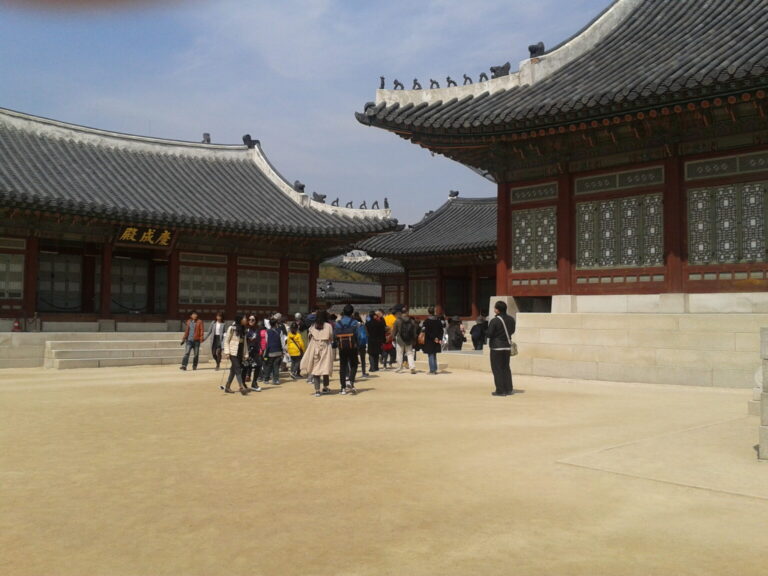
End your day by relaxing in one of Seoul’s many traditional spas and saunas, where you can enjoy hot baths, relaxing massages, and rejuvenating beauty treatments.
But if you’re looking for a more adventurous experience…
Seoul Adventure Itinerary: Exploring the Wilder Side of the South Korean Capital
Day 1: Downhill Mountain Biking and Tradition Reimagined
Start your day with a thrilling ride down Namsan Mountain—not by cable car, but by downhill mountain biking! Rent a mountain bike from one of the local shops and zip down the winding, thrilling trails while taking in panoramic views of the city. A real adrenaline-pumping start to your day!
After your biking adventure, cool off with a quick lunch at one of the local markets, such as Namdaemun Market, where you can sample a variety of Korean delicacies.
In the afternoon, immerse yourself in the local culture with an exciting twist. Visit the Trick Eye Museum in Hongdae, where you can lose yourself in interactive optical illusions and take fun photos in surreal settings.
End the day exploring Myeongdong’s street food scene, where you can sample a variety of delicious and unique snacks, such as the famous melon-flavored cheese ice cream.
Day 2: Heights and Water Adventures
Start your second day with an exhilarating indoor climbing experience at Seoulland Climbing Center. Challenge yourself on climbing walls of varying difficulty levels and celebrate each climb.
After a morning of climbing, continue your adventurous journey with a visit to Lotte World Theme Park. Explore the thrilling rides and roller coasters at this indoor amusement park, which offers fun for all ages.
In the evening, enjoy a meal at a traditional Korean restaurant with a twist. Try the “Korean BBQ Adventure”, where you can grill your own delicious meat at the table and sample a variety of side dishes.

Day 3: Urban Exploration and Wilderness
For your final day of adventure in Seoul, start with a morning jog along the Han River. Enjoy the charming views of the city as you run along the riverbanks and stroll across the bridges.
Next, head to Bukhansan National Park, where you can take a challenging hike up to Baegundae Peak. You’ll be amazed by the panoramic views of the city and the mountainous landscape at the top!

After your hike, head back down to the city and visit the Gangnam district for an urban go-kart experience. Drive through the bustling streets of Gangnam in a themed go-kart and experience the thrill of exploring the city in a whole new way.
End the day with a farewell celebration at one of Hongdae’s lively bars, where you can sip on unique cocktails and dance the night away to local DJs.
Check out the detailed map of the essential or adventure 3-day itinerary in South Korea here! ![]()
13 Safety Tips for Traveling to South Korea for the First Time
Traveling to South Korea for the first time is an exciting experience, but it is important to be aware of certain safety precautions. Here are some tips to help ensure a safe and smooth trip:
- Tensions between South Korea and North Korea: Due to the delicate political situation, it is important to be aware of the tensions between South Korea and North Korea. North Korea periodically carries out missile launches and other provocations. Monitor developments and consider downloading the South Korean government’s “Emergency Ready” app for up-to-date alerts and information.
- Emergency Drills: Civil emergency drills are held a few times a year in South Korea for fires, earthquakes, and other disasters. Be aware of these drills and know what to do in case of an emergency.
- Public Protests: Large public gatherings and protests are common, especially in Seoul. While protests are generally peaceful and policed, they can sometimes turn violent. Avoid large public gatherings and be aware of your surroundings.
- Personal Safety: South Korea is generally safe for most travelers, with a low crime rate. However, petty crime can occur, especially in urban areas. Be aware of your belongings and avoid unnecessary display.
- Sexual Harassment and Violence: Sexual harassment and violence can occur, especially in nightlife areas such as Itaewon and Hongdae. Do not accept food, drinks or cigarettes from strangers and go out in groups if possible.
- Rainy Season and Typhoons: South Korea’s rainy season runs from late June to late August, with typhoons possible in August and September. So be prepared for adverse weather conditions and follow the advice of local authorities in case of flooding or landslides.
- Earthquakes and Tsunamis: Earthquakes and tsunamis are a risk in South Korea. Know the tsunami warning signs and where to go in an emergency. Don’t wait for official alerts, warnings, or sirens.
- Medical Emergencies: Make sure you have travel insurance that covers medical expenses abroad. In case of a medical emergency, call the local emergency number (119 for ambulance) or go to the nearest hospital. Major hospitals in Seoul and other major cities usually have English-speaking staff.
- Food Safety: Street food in South Korea is delicious, but be careful to choose clean, reputable places to eat to avoid food poisoning. Drink bottled water and avoid ice in drinks if you are concerned about the quality of the water.
- Road Safety: If you plan to rent a car or use taxis, be aware that traffic can be heavy in urban areas. Respect the rules and always wear your seatbelt. Additionally, if you are unfamiliar with local traffic laws, it may be safer to opt for public transportation.
- Respect Local Rules: Respect local laws and regulations. Avoid engaging in illegal activities, such as consuming illicit drugs, which may result in severe consequences under Korean law.
- Heed Warning Signs: Pay attention to any warning signs or safety notices issued by local authorities or foreign embassies. In case of an emergency, follow the instructions of the authorities and stay informed about the situation.
- Travel Insurance: When planning your trip, purchase comprehensive South Korea travel insurance that covers medical expenses, medical evacuation, and lost luggage. This will ensure your safety and peace of mind throughout your trip.
By following these safety precautions, you can enjoy a safe and memorable trip to South Korea.
In Conclusion…
Both the Essential Itinerary and the Adventure Itinerary offer great options for enjoying 3 days in South Korea, highlighting the many facets of this fascinating country. Whether you’re a traveler interested in Seoul’s rich history and tradition or someone looking for adrenaline and adventure, there’s something for everyone!
So whether you’re a culture enthusiast, an adventure lover, or a combination of both, South Korea offers a truly unforgettable travel experience!
So, have you been to Seoul? Do you agree with the itinerary? Or are you planning your trip to South Korea? Leave your comment below and I’ll always respond! ![]() 🇰🇷
🇰🇷

